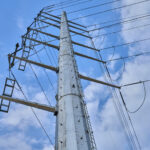Zuari Cement is known for Innovative products that cater to all construction needs
Government investment in infrastructure & other mass projects, growth of tier 2 cities, state-owned schemes/support for investment in manufacturing & related sectors, growth of residential sector etc account as the key drivers for demand of cement. Krishna Srivastava,Whole Time Director, Zuari Cement.
Zuari is a part of the Italcementi Group, which is the 5th largest cement producer in the world. What is the share you command in the Indian market ?
We chiefly cater to the southern states of India , since we operate in only 6-7 states of South India, to talk about market share on an all India basis would be wrong. Having said that, in the markets that we operate in, we have a commendable market share and also a very well established brand equity that translates into better margins for the company & its channel partners.
What are the special cements available with Zuari? Would you detail us about their features?
Our product portfolio includes ordinary portland cement, portland slag cement, portlandpozzolana cement, masonry cement, anti polluting and self-cleaning TX Active cement, transparent cement named “i.light”. Zuari Cement’s latest launch is i.pro Brixment-Masonry Cement. The mortar of i.pro Brixment spreads easily and has a superior adhesive and cohesive quality which extrudes readily from the joints as units are placed and does not smear nor drops. The superior plasticity prevents rapid loss of mixing water enabling the masonry units to be carefully aligned, leveled, plumbed and adjusted to proper grade without the intimate contact and bond. i.proBrixment has greater resistance to chemical attack, staining and freeze-thaw deterioration due to the controlled air content of masonry cement mortars. It has a consistent rate of hardening enabling the mason to lay the masonry units and tool the joints at the same degree of hardness, thereby obtaining uniform joint colour. This cement is specifically designed to cater the masonry needs of construction and are made available in 25 kg paper bags as against the conventional 50 kg cement bag. As a group, Zuari belongs to the Italcementi group that is world renowned for innovative products. It has all types & varieties of cement that cater to all construction needs.
What is the status of a cement terminal at Cochin? What are the expectations from this project?
The cement terminal in Cochin has been completed. We expect to commission the same in the early 2016. This terminal is expected to give us more market penetration in Central Kerala, which holds a lion’s share of the Kerala cement market at large. This would enable us to tap the inherent potential of these markets and create in-roads in both the rural as well as the urban segment of these markets.
India’s per capita consumption of cement is still much lesser than the developed and the other developing economies, How do you see this changing in coming times?
The last three years have been very trying for the cement industry, it has been passing through the worst demand scenario in the last few decades. With a colossal demand-supply mismatch in the market, especially in South India we have experienced 3 continuous years of dropping demand which has a CAGR of around 14%. This along with a supply scale up of 12% for the same period has made the situation even worse. However the projected growth figures of over 7% GDP in the current year & another couple of years to come has added a sense of hope that as a core sector better days are on the anvilfor the cement market. At the ground level, the investment that the government both in centre& the states make in infrastructure development will have the key say in strengthening the market. As part of a multi-billion industry, we sincerely believe that the bad times are behind us.
The government has decided to adopt cement instead of bitumen for the construction of all new road projects, How do you see this decision ?How do the concrete roads score over the bitumen roads in terms of cost and sustainability?
The cost of laying roads has to be read with the cost of maintenance as well as the damage to the roads during adverse climatic conditions. This is exactly where concrete roads scores over the conventional bitumen roads. Concrete roads are relatively maintenance free and are more resistant to adverse climatic conditions. So far studies in this line haveundoubtedly proved that the concrete roads are less expensive & more sustainable than bitumen roads. This is probably one of the reasons why the Government & Ministry of Road Transport and Highways have started looking at adopting cement instead of bitumen for all new road projects.
The increase in clean energy cess on coal from ` 100 to `300, will lead to rise of power and fuel costs. What is the effect on the retail price on this account ?
It is too early to draw inferences & conclusions. Cement prices are dependent on various factors like input costs of raw material, taxes, levies, duties & other statutory costs. But the key factor responsible for pricing is the demand-supply scenario in each market from time-to-time.
China and Brazil have more than 30% RMC share in the total concreting as compared to 8% in India. What are the cement companies doing about the low penetration of RMC in the Indian market?
It is a fact that the RMC segment is not that high in India as in other countries like China & Brazil. However, it should not be forgotten that RMC business in India has scaled up multi-fold in the last few years. There are many new RMC manufacturers and many existing players also have expanded their business to new geographies. Most of the leading cement manufacturers in India have their own RMC units. Some of the major cement manufacturers in India viz. ACC, UltraTech (Grasim), Lafarge, Larsen & Toubro, Madras Cements, India Cement etc. have ventured into ready mix concrete. The ready mix concrete business in India is still in its infancy. The gap between the organised and unorganised sector is quite wide. Increased awareness about advantages and quality has boosted the demand in many cities across the country. This trend has caught up fairly well and within the next 1-2 years, large players are looking at a growth rate of over 25% in the organised sector.
What would be the growth drivers for the cement industry in the near future?
As discussed earlier, government investment in infrastructure & other mass projects, growth of tier 2 cities, state-owned schemes/support for investment in manufacturing & related sectors, growth of residential sector (more money to invest in the hands of the AamJanta) etc account as the key drivers for demand of cement.
How do you plan to cut the CO2 emmissions from your manufacturing plants and what are the other green intitiativesZuari Cements has taken?
Zuari Cement is a part of the Cement Sustainability Initiative (CSI – part of World Business Council for Sustainable Development) which is a group of companies working actively in this space. The CSI in India was the first group to publish a low carbon road map for the cement sector. The road map lists 28 actions that could be taken by cement industry to reduce its carbon footprint, many of which have been implemented and rest are under implementation. Cement plants are increasingly being operated by using a basket of fossil fuels and waste fuels each with different carbon intensities. Although there is an international standard for carbon intensity of various fuels, this is locally and nationally tailored to suit environmental initiatives.
Amongst fossil fuels petcoke, anthracite, high grade sub-bituminous coals are considered high in carbon intensity, whereas lignite, oil and natural gas are considered low in carbon intensity and biomass has a carbon intensity of zero. However a cement plant cannot be run solely on biomass due to availability and other sustainability issues. Industrial waste fuels like dolachar, ETP sludge, organic residues, spent carbon etc are locally considered carbon neutral for initiatives like the “Perform , Achieve and Trade” (PAT) scheme, but it is not so as per international definitions.
To sum up, the focus today is in maximizing the utilization of waste fuels as it definitely helps in sustainability. A better standardization of emission intensity considering a wider variety of wastes will help this effort. Investment in carbon reduction is an ongoing process and Zuari Cement has been investing in reducing its carbon footprint since 1998 when its Yerraguntla plant set up a separate line calciner with 6 stage preheater. More recently, since 2009, Zuari has invested in excess of ` 100 crores and continues to invest every year. Some of these investments are spread over 2 or more years and therefore it would not be correct to talk about investment in a particular year.
Zuari Cement is coming out with different products with a low carbon footprint. It is also helping the society by using industrial , agricultural and processed municipal solid wastes. These measures are being appreciated by our customers and helping Zuari to become the preferred brand amongst our customers. Zuari already has products with a low carbon footprint like PSC and Masonary Cement and the same are commercially available in the market.









